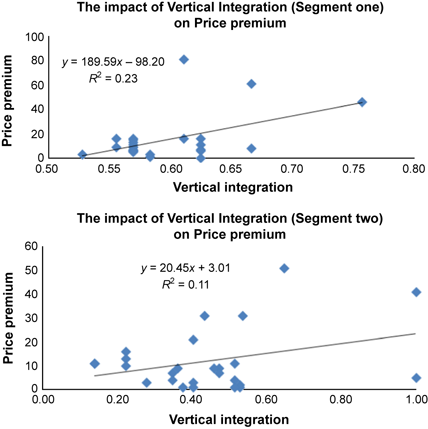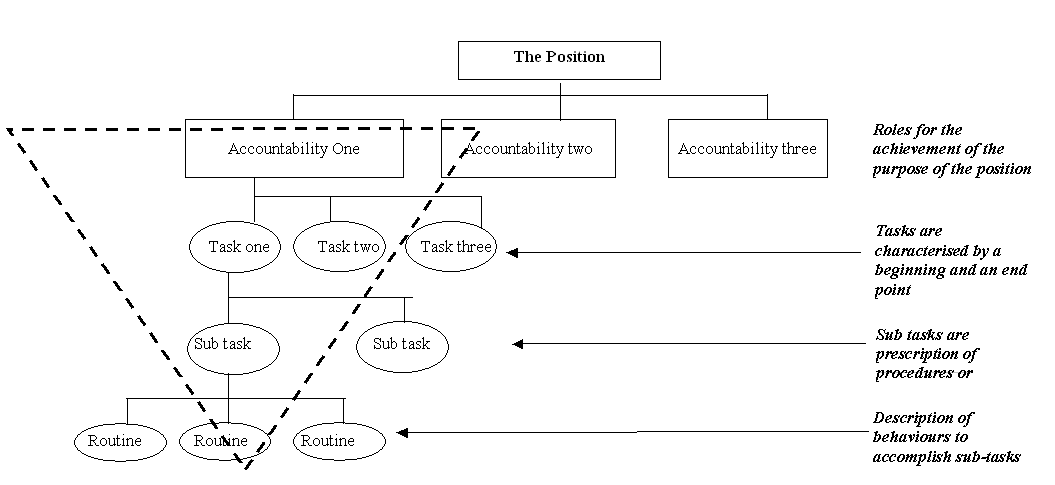Introduction
In today’s business world, organizations carry out activities that are geared towards improving their competitiveness in the market. Goldstein, Ward, Keong, and Butler (63) are of the opinion that efficiency is a key element in improving the services of a business enterprise. Consequently, Goldstein et al. (63-75) point out that such efficiency is realized through the adoption of various business concepts. Examples of such concepts include operational management. In the current paper, the author examines this element of operational management within the context of a logistics company. It is the opinion of this author that the concept is an integral part of Khalifa Industrial Zone, Abu Dhabi (herein referred to as KIZAD). KIZAD is the entity selected for this analysis.
In the paper, an overview of the company’s mission is provided. In addition, an analysis of the various factors associated with the company’s operational strategy is provided. Such factors include the strengths and weaknesses of the organization. The opportunities and threats facing the company are also discussed with regards to their relevance to operational management. The said factors are in line with the sentiments of Slack and Lewis (65), who argue that an organization’s operational strategy should reflect the company’s mission and vision statements.
In addition to the issues outlined above, the author of this paper examines the application of four operational management decisions and how they are related to business processes at KIZAD. Recommendations to improve the quality of operations are also provided in accordance with the suggestions made by Donovan (1) and Buzacott (15). Finally, an analysis of the ‘structural effect’ element is provided. The analysis is made with regards to management and technological innovations.
Operational Strategy
Operational strategy falls within the greater spectrum of the principles associated with operational management. A discussion of this strategy enhances one’s knowledge on the subject matter and helps to outline its importance to a given company. In light of this, the arguments made in this paper are anchored on the definition of this term. Slack and Lewis (71) define the concept as an organization’s action plan highlighting exploitation of resources. The action plan involves the utilization of resources in the production of goods and services.
Khalifa Industrial Zone, Abu Dhabi
The Company’s Mission Statement
Information obtained from the Abu Dhabi Ports Company (para. 1) suggests that KIZAD is a business park that acts as a free trading zone within Abu Dhabi. The company brings together multinational companies in a bid to boost their economies. As a result of this, the organization’s mission is geared towards easing the process of doing business in the region. The mission is achieved through the uniqueness of the organization’s scale of operations, provision of advisory services, and the adoption of vertically integrated clusters. The entity’s operational strategy is, to this end, centered on efficiency.
Strengths of the Company
As aforementioned, KIZAD’s operational strategy revolves around efficiency. The use of vertically integrated clusters is one of the strengths of this company. It is one of the business concepts that have greatly improved the organization’s performance in the competitive export market. The integration of these clusters reflects a model where different firms come together to produce different components of a final product. The different firms operate from different locations (Ball, Geringer, Minor, and McNett 100; Slack and Lewis 173). The application of this production framework helps to enhance the efficiency of KIZAD’s operations.
It is noted that the adoption of vertically integrated clusters improves not only the company’s efficiency, but also its profit margins. In a study to determine the vertical clustering structure, Li and Mahbubani (309) found out that a company stands to increase its profit margins as a result of the pricing strategy advocated for by this framework. Figure 1 illustrates the benefits of adopting the concept against price premiums of products sold.

The graphs above illustrate an increasing price premium of goods sold. The increase leads to a subsequent rise in the degree of vertical integration in a firm. According to Abu Dhabi Ports Company (par. 1), a similar growth in UKIZAD’s revenue is expected with the utilization of vertically integrated clusters.
Weaknesses of the Company
In a bid to attract investors, Haider (3) points out that KIZAD may affect the ownership structures of businesses established within the facility. All of the businesses may be fully owned by foreign investors. The focus on investors is one of the company’s weaknesses. Such a move is unfair to the local economy. It locks out the citizens from the benefits of a project initiated and supported by funds from their government. Consequently, the company’s efficiency strategy is watered down by the ethical concerns associated with ceding control to foreign investors.
Opportunities
The major opportunity associated with KIZAD is the creation of jobs. Haider (3) argues that approximately 60,000 jobs will be made available once the project is fully implemented. Such opportunities translate to good news for the locals. The local citizens will benefit from the skilled labor that comes with foreign investors.
Threats
One of the major threats facing this organization is possible opposition from the locals. Such opposition may stem from the perceived skewed allocation of opportunities by the organization to favor foreign investors. Schneider (145) suggests that encouraging complete privatization of a venture funded by the government may lead to civil unrest. The plan to allow investors to own the project was part of the government’s strategy to lure multinational companies into the region. However, the policy should not be adopted by fully disregarding the interests of the local community, who should own a portion of the project.
KIZAD: Decisions in Operation Management
Human Resource and Job Design
In the opinion of William (7), human resource is an important component of a contemporary business. To this end, an organization’s operational strategy has to reflect the nature of the human resource in the company. With regards to KIZAD, Abu Dhabi Ports Company (1) holds that efficiency informs the company’s operational strategy. The organization seeks to attract skilled labor to increase the quality of the goods and services produced.
The selection of a particular workforce determines the job design that an organization settles for. The design of labor force at KIZAD is informed by the company’s adoption of the vertical integration cluster concept. Job models at KIZAD are structured in such a way that the personnel gain maximum satisfaction. Figure 2 below illustrates this observation vividly.

The figure above is an illustration of a conventional job design. The objective of such a design is to ensure that given tasks are accomplished effectively. A particular hierarchy and sequence is given to the task an individual is expected to accomplish. The purpose of developing a job design is to give an employee the opportunity to grade their performance at work. The employee ranks their performance using the various accountability parameters. As a result, work satisfaction is realized (William 13).
Forecasting
Abu Dhabi Ports Company (par. 1) suggests that KIZAD has an enormous economic potential. If successfully implemented, the project has a potential of contributing 15% to the GDP in Emirates within a decade. The company has launched a strategic plan aimed at making it a global leader in the production of metal related products. In light of this, one can argue that forecasting is a vital element of operational strategy in a company. Bateman and Snell (79) suggest that various factors inform forecasting in organizations. Such factors include, among others, production trends and distribution patterns. As such, KIZAD is expected to make forecasts about the company’s plans only when the factors mentioned above are in favor of its operations.
Location Strategy
The decision to launch the business park in its current location is seen as a business strategy to attract investors. Haider (4) points out that Abu Dhabi occupies a geographical location that makes it a strategic destination for multinational companies. The region is known for oil and gas production. For many years, Abu Dhabi has been associated with investors from different parts of the world. According to Hill and Gareth (44), an organization is expected to position itself in a region that is favorable to investors. Such expectations make Abu Dhabi attractive to international business operators.
Abu Dhabi Ports Company (par. 3) argues that the location of this city is suitable for a number of businesses targeting the international consumer. KIZAD has adopted a strategy that is aimed at encouraging foreign investment to allow the project to yield maximum returns. Abu Dhabi is presently populated by investors of all kinds. KIZAD has taken advantage of this unique population distribution by coming up with plans to entice international businesses. According to Hill and Gareth (107), an investor is more likely to start a business in a region they are familiar with, making Abu Dhabi a natural choice.
Design of Goods and Services
Reid and Sanders (67) are of the view that an organization must align its production strategy with the uniqueness of its mission statement. A review of KIZAD reveals that the company seeks to make the region a hub of international trade by establishing free trading zones. As a result, the company acknowledges the need to set standards to ensure that the goods and services produced are unique and in line with its mission and vision statements. The same explains why the company has settled for the vertical integration of clusters.
The formulation of a vertical integration of clusters is a strategy that KIZAD aims to employ to produce high quality goods and services (Abu Dhabi Ports Company 1). The strategy reflects the set objectives of the company. Reid and Sanders (88) suggest that companies should develop strategies aimed at ensuring that the nature of goods and services produced is unique to the organization.
Reducing Costs at KIZAD Due to Improved Quality of Operations
An organization that seeks to improve its performance must take into account the need to enhance the quality of its operations (Buzacott 15). As an organization, KIZAD has been in existence for less than five years. It is a fairly young company. Given this age, the company must ensure that it adopts an operational strategy that is better than those used by the competitors given the need to attract investors. Inventory is one of the areas where the company can make improvements to enhance performance.
According to Donovan (para. 3), companies that survive the harsh dynamics of the business world are those that can execute their mandate without too much inventory. In the case of KIZAD, the organization needs to excel in the manufacturing sector within which it is operating. To achieve this, the management should advise the investors to maintain a low inventory. Sustaining a high inventory puts a company at risk of running low on operating capital.
There are other ways through which KIZAD can improve the quality of its operations. One such strategy involves the reduction of unbudgeted expenses (Wright and Mechling 78). Many organizations face challenges in meeting their operational obligations owing to unnecessary expenses. The expenses lead to high operational capital for a business. An example of this is evident in the manner through which KIZAD intends to put up structures to add to the planned design (Abu Dhabi Ports Company 3). In coming up with such projects, the organization should consider lowering the operating costs.
One of the ways through which a business organization can thrive in the business industry is by ensuring unwanted costs do not affect its operations (Bechbuhl 68). As such, a company like KIZAD should seal all loopholes that attract unwanted expenses. The company is still young and should spend more resources on infrastructure and advertisement campaigns, rather than on increasing the number of buildings.
KIZAD: Structural Effects
Supply chain management is a business concept that can be exploited to enhance organizational performance. It involves multiple firms contributing towards the production and delivery of certain goods and services (Roger 310). In such instances, there is need for a structural layout to ease the flow of activities in each of the firms. Structural organization is another important element with regards to business innovations. In both cases (supply chain management and structural organization), the element of structure creates what is known as the structural effect. Figure 3 below highlights this concept clearly:

Structural effect can be explained using the process chart above. For example, a company may intend to produce the blue coloration in the chart. It may be tedious to come up with the product in a single process. As a result, the production process is broken down into segments as shown above. All the processes are carried out simultaneously. Such synchronization of procedures increases the pace of production. The structural effect is an important tool that organizations can exploit to hasten their operations (Waters 22).
In relation to KIZAD, the structural effect is evident in the company’s vertical integration of clusters (Abu Dhabi Ports Company 1). Each of the clusters is viewed as a segment of a larger piece working independently (Bidgoil 89; Cool, Dierikx, and Jamison 507). The process of manufacturing a given product is split owing to the inability to bring the different firms under one roof. However, the benefits are realized once the process is complete.
Works Cited
Abu Dhabi Ports Company 2014, Mission & Brand Values. Web.
Ball, Donald, Michael Geringer, Michael Minor and Jean McNett. International Business: The Challenge of Global Competition. London: McGraw Hill, 2009. Print.
Bateman, Thomas, and S. Snell. Management: Leading and Collaborating in the Competitive World, London: McGraw Hill, 2010. Print.
Bechbuhl, Hendra. “Best Practices for Service Organization.” Business Strategy Review 15.1 (2004): 68-70. Print.
Bidgoil, Hossein. The Handbook of Technology Management: Supply Chain Management, Marketing and Advertising, and Global Management, New Jersey: John Wiley & Sons, 2006. Print.
Buzacott, Andre. “Service Systems Structure.” International Journal of Production Economics 68.1 (2000): 15-27. Print.
Cool, Karel, Ingemar Dierikx and David Jamison. “Business Strategy, Market Structure and Risk-Return Relationships: A Structural Approach.” Strategic Management Journal 10.6 (2006): 507-522.
Donovan, Michael. n.d. Reduce Inventories and Improve Business Performance. n.d. Web.
Goldstein, Susan, Peter Ward, Leong Keong and Timothy Butler. “The Effect of Location, Strategy, and Operations Technology on Hospital Performance.” Journal of Operations Management 20 (2002): 63–75. Print.
Haider, Hasib 2010, Abu Dhabi Unwraps World’s Largest Industrial Zone. Web.
Hill, Charles, and J. Gareth. Strategic Management: An Integrated Approach, Michigan: Cengage Learning, 2009. Print.
ICC Consult Center 2009, Setting KRA and KPI. Web.
Li, Ding and Jalesh Mahbubani. “The Two-Stage Decision Model of Vertical Integration.” Management Decision 51.2 (2013): 306-320. Print.
Reid, Dan, and N. Sanders. Operations Management, New York: Wiley, 2009. Print.
Roger, Morriss. “Colonization, Conquest, and the Supply of Food and Transport: The Reorganization of Logistics Management, 1780–1795.” War in History 14.3 (2007): 310–324. Print.
Schneider, Benjamin. “Welcome to the World of Services Management.” Academy of Management Review 18.2 (2004): 144-150. Print.
Slack, Nigel, and M. Lewis. Operations Strategy, Harlow: Pearson Education, 2002. Print.
Waters, Donald. Logistics: An Introduction to Supply Chain Management, New York: Palgrave Macmillan, 2003. Print
William, Stevenson. Operations Management, London: McGraw Hill, 2008. Print.
Wright, Charles and Gregg Mechling. “The Importance of Operation Management Problems in Production Organizations.” Omega 30.2 (2002): 77-87.